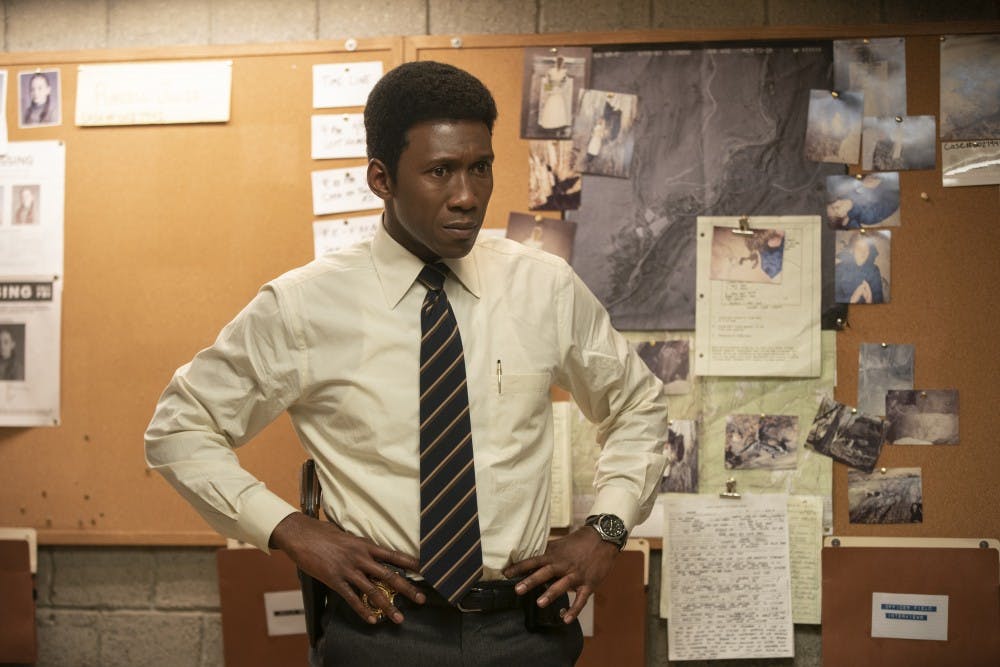Nic Pizzolatto’s critically acclaimed series “True Detective” triumphantly returned to HBO Sunday night with a two-episode premiere.
In a discouraging second season which lacked the grit and intensity the series thrived on in its first installment, Mahershala Ali, playing detective Wayne Hays, has brought intrigue, intellect and a sinister nature back to the crime show.
While details will continue to develop, the third season centers on the fictional 1980 abduction of 12-year-old Jack Purcell and his sister, 10-year-old Julie. The two siblings set off for the park one afternoon and were never seen again — at least not yet.
Set outside Fayetteville, Arkansas, the season follows three separate timelines of Hays’ investigation: the early 1980s, the 1990s and 2015. The story arc of Pizzolatto’s latest adventure rehashes a similar southern Gothic tone the first season emitted in rural Louisiana.
Of course, the early parallels to season one don’t stop there.
The subtle odes to Satanism and occultism that made the first anthology's “Yellow King” case so compelling also appear early and often in the latest saga.
When Hays stumbles upon the staged body of Will Purcell out in the woods, he is led to the corpse by a series of faceless straw dolls, which are later discovered to have been handed out just days before on Halloween.
Furthermore, the teenage suspect duo of Freddy Burns and Ryan Peters, played by Rhys Wakefield and Brandon Flynn, are portrayed as troublemaking heavy metal fans in leather jackets and Black Sabbath T-shirts.
The local hangout for boozing high schoolers and drug addicts is also aptly named Devil’s Den.
Additionally, the first two episodes of season three have many connections with and references to the Vietnam War, which concluded just a few years prior to the fictional abductions.
It’s quickly discovered that Hays, his partner and the local trash collector are all Vietnam veterans.
There are faint hints throughout the two episodes that Hays dealt with some difficulties upon returning home, while Woodard is visibly still battling the side effects of the conflict. Additionally, Woodard's wife recently left him and took their children with her.
Woodard, Native American, and Hays, African American, also bring underlying tones of race relations to the intertwining narrative.
As one of the final people to see the Purcell children alive, Woodard is brought into an interrogation room by Hays and West in the season's second episode.
In the scene, there’s an underlying understanding Woodard shares with Hays but not with West. The detectives’ positioning magnifies this. While Hays sits face-to-face with Woodard at the interrogation room table, West stands more removed, leaned up against the wall by the door.
Hays is also more collected and conversational in talking with Woodard throughout the exchange than the probing West.
If the latest season continues to follow previous trends, Jack Purcell’s killer likely hasn’t been introduced yet. But the dark mystery and eeriness that captivated audiences in the first season is back and entertaining as ever.




